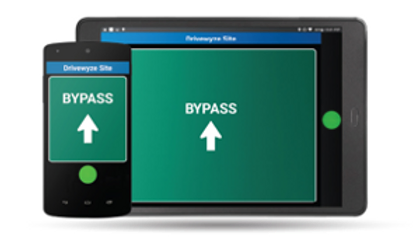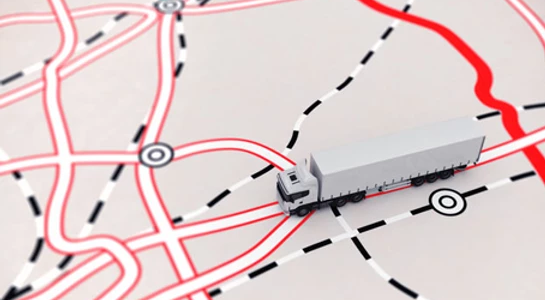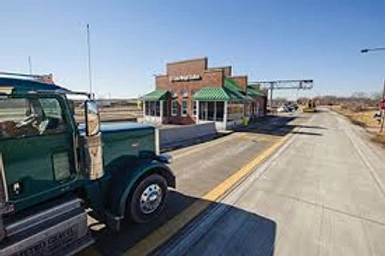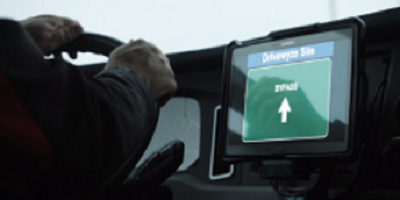How to Get Bypasses Regardless of Your Safety Scores
Safety scores are essential to every carrier’s operations. They communicate to law enforcement a fleet’s overall commitment to safety by combining relevant data, from crash reports to inspection results. They are also screened by transponder-less weigh station bypass technologies to determine if a truck should be pulled in for inspection. This often creates a misunderstanding about how a fleet’s Inspection Selection System (ISS) and Compliance, Safety, Accountability (CSA) scores affect their eligibility for bypasses.
What’s the Difference Between a CSA & ISS Score?
Before examining how safety scores impact a carrier’s ability to receive more weigh station bypasses, it’s critical to understand the distinction between CSA and ISS scores. Although similar, CSA and ISS scores have discreet differences that come into play during a truck’s route.
● The CSA score is a collection of safety data aggregated by the Federal Motor Carrier Safety Association (FMCSA). This data includes roadside inspections, crash reports, investigation results, and registration details from the last 24 months. The CSA program is designed to hold carriers and drivers accountable by docking their score with each violation. Fleets can find their CSA scores on the FMCSA’s Safety MeasureOment System (SMS).
● A fleet’s ISS score is an aggregation of its various CSA scores. Ranging from 1 to 99 (with a score of 100 being out of service), the FMCSA creates ISS scores to reflect a carrier’s overall safety profile. The lower the score, the better the safety rating. It is the ISS score that helps weigh station personnel determine if a truck requires an inspection.
To put these differences into perspective (side by side image comparison), think of CSA scores as the engine parts and the ISS score as the entire engine. When bypass technologies are screening vehicles for potential inspection, they’re looking at the ‘full engine.’
How Bypass Programs Use a Fleet’s ISS Score
Bypass programs only screen for ISS scores and not CSA scores as it is commonly believed. An ISS score offers law enforcement a comprehensive overview of a fleet’s safety profile, and it serves as a more efficient measurement tool.
Advanced bypass programs use modern technologies to screen for a vehicle’s ISS score, plus these other key inspection criteria:
● License and vehicle identification (VIN) number, which allows law enforcement agents to screen against registration, permits, and taxes.
● The weight of the vehicle, using embedded Weigh in Motion (WIM) scales to record the weight wirelessly.
● The Commercial Vehicle Safety Alliance (CVSA) sticker.
● Hazmat placards, if applicable to the truck’s load.
● In some states, the carrier’s International Registration Plan (IRP) and International Fuel Tax Agreement (IFTA).
Before the truck reaches the station, the bypass program scans for the vehicle’s US Department of Transportation (USDOT) number, which is used to locate the fleet’s ISS score in the federal system. The software then employs imaging, sensor information, and authoritative data sources to give law enforcement a detailed snapshot of that vehicle and its carrier. From there, the truck is either asked to pull into the scale house or granted a bypass.
Bypass services that offer 100% software-based technology, like Drivewyze PreClear®, allow drivers to receive bypasses directly on their in-cab ELD or mobile devices. This means that ISS scores and other inspection credentials can be read automatically at highway speeds, without having to slow down or switch lanes to drive under a transponder reader.
A great ISS score will typically result in more bypasses. Bypass services, like Drivewyze PreClear®, use the ISS score to determine the likelihood of performing an inspection. For instance, a truck with an outstanding score could receive bypasses up to 98% of the time.
Improving ISS & CSA Scores
It is important to understand that a poor ISS score does not mean that a fleet will never get bypasses. It may receive less, but once safety scores are improved, it will result in more bypasses.
There are several ways fleets can improve their scores for a more efficient operation. The most effective way for carriers to enhance their safety scores is to use weigh station inspections and highly reviewed bypass services to their advantage.
-
Ensure inspections are always excellent. Inspections impact both ISS and CSA scores, and clear inspections can improve them.
-
Encourage drivers to volunteer for inspections wherever schedules permit to have a record of violation-free results.
-
Get first-hand knowledge of the inspection criteria by speaking with law enforcement officers. Retired officer Doug Hatch says this is one of the best ways to learn how to improve a carrier’s safety scores.
-
Take steps to receive more bypasses by streamlining safety procedures and implementing a bypass service. Bypasses proves the fleet’s commitment to safety and therefore improves safety scores.
-
Invest in a bypass service that provides GPS-based business intelligence reporting to understand what criteria are reported during vehicle inspections. This will highlight the specific areas where safety measures can be improved across the fleet to upgrade safety scores and provide more bypass opportunities.
Enhance Safety Scores with a Bypass Service
There are many measures carriers can take to understand their safety scores and improve them. By investing in the bypass service with the broadest possible network, such as Drivewyze PreClear®, fleets can automatically increase the opportunity for a bypass, especially for carriers that serve multiple jurisdictions. The bypass service can then be used to analyze safety violations that are contributing to the fleet’s safety profile. As scores improve, it generates a snowball effect: fewer inspections, less time wasted, and happier, more efficient drivers.
Interested to see how your fleet can get more bypass green lights on their routes? Contact us to start a free trial and find out how you can improve your fleet’s ISS score with Drivewyze PreClear®.
4 Things to Look for When Choosing a Bypass Service
Every day, weigh stations audit vehicles from thousands of carriers to make highways safer for all drivers. However, inspections can be costly for fleets. Drivers have to pull in and wait in long lines to be inspected, often on multiple occasions along a single route. It wastes valuable time and money for vehicles with no safety violations and overwhelms law enforcement at each station. As a result, fleets are looking to implement innovative bypass technologies to address these challenges and improve the driver experience.
One such system fleets are turning to are transponder-less bypass services that are software based which are known to significantly reduce carriers driving hours and save operating dollars. In one case, Mesilla Valley Transportation reported that Drivewyze PreClear®, an example of a software-based system, saved the company 1,579 hours and over $164,000 in operating costs in just one month.
There are a number of bypass services on the market. So how do carriers select the right one that will benefit their operations? These are the four primary criteria fleet managers should consider before making a choice:
1. Network Coverage on Routes, Nationwide & Beyond
A bypass program that operates on the broadest possible network increases the opportunity for a bypass, especially for carriers that serve multiple jurisdictions. Fleet operators should ensure the bypass service is available at both fixed and mobile inspection sites, with the functionality to work at scales that are Weigh in Motion (WIM) enabled and scales that are not.
Drivewyze currently has the largest bypass network in the industry. The Drivewyze PreClear® technology is available at over 840 vehicle inspection sites in 45 states and 2 Canadian provinces, and is the exclusive technology provider for bypass services at 14 locations in North America, including New York, Connecticut, Alberta, and Ontario.
2. Ease of Use, For Efficiency & Safety
The best bypass technologies are the ones that are easy to use and implement while driving. Choose a service that offers hands-free functionality, which will allow drivers to process notifications without taking their eyes off the road.
Some bypass services provide advance notifications of fixed weigh stations and mobile inspection sites. These alerts, like Drivewyze PreClear® Heads Up Alerts, will help diminish accidental scale avoidance, which can impact a carrier’s safety scores. Other features include safety notifications to warn drivers of high-risk areas, especially if they are driving on unfamiliar roads. Not only will these notifications decrease the risk of crashes, but fleets can also gain insight into how drivers behave before and after they receive one. These factors can help improve a carrier’s Inspection Selection System (ISS) score, resulting in more weigh station bypasses.
Many fleets prefer a software-based bypass service that can be seamlessly integrated onto the driver’s mobile devices or the in-cab telematics device (ELD). This helps maximize your ELD investment while eliminating the often-hidden costs of transponder management.
3. Features That Keep Drivers Top of Mind
Driver retention is an ongoing issue in the trucking industry, which sees an annual turnover of 90%, with 64.9% of drivers staying with a company for an average of just 90 days. By choosing a software-based bypass service, and leveraging GPS and geo-fencing technologies, carriers can respond to drivers’ main frustrations: delays and on-the-road stresses.
Software-based bypass technology, like Drivewyze PreClear®, eliminates the need for a transponder. This means drivers can stay on the mainline, avoiding delays along their route. The hands-free notifications provide important updates that can prepare the driver for weigh stations, traffic, or unsafe areas, alleviating the stress of reacting to these frustrations in real-time.
These systems work with WIM scales to screen the truck as it passes, so the driver can avoid entering the scale house unless it’s required. Plus, without the need to drive under a roadside transponder reader, vehicles can stay on the mainline for longer without slowing down or switching lanes.
4. Opportunities for a Connected Truck
Open platforms are the future of trucking. Hardware is expensive to install, difficult to maintain, and even more costly to upgrade. By selecting a bypass service that allows for cross-platform integration, fleets can implement multiple software solutions on devices that are already in the truck.
The benefit of this bypass technology is that carriers only invest in the base software once and can install additional apps with no extra hardware needed. Fleets can further integrate software for operational insights, driver efficiency, and enhanced safety. For example, Drivewyze’s Safety+ service is an application that proactively prevents accidents and citations through in-cab and back-office driver coaching. It runs on the fleet’s existing ELD system with no additional hardware installation required.
Compare Leading Services to Discover the Difference
There are many factors to consider when selecting a bypass service. Focus on features that will improve fleet efficiency, safety, and driver satisfaction. The most advanced bypass technology offers extended inspection site coverage, ease of use, mobile integration, and open software for future connectivity.
It’s helpful to compare the leading technologies on the market in relation to a fleet’s specific needs. Use this comparison breakdown to discover the key benefits and differences between software-based services, such as Drivewyze PreClear®, and a traditional, transponder-dependent system. Staying educated on the industry’s best technology is the first step to dramatically improving operations for all stakeholders—from the fleet manager to the end customer.
Discover how a bypass system can make a difference to your fleet operations. Contact us to start a free trial of North America’s largest weigh station bypass service, Drivewyze PreClear®.
The three pillars of information security management that will help you minimize security threats
Information security management and cybersecurity are an important part of running a business because they ensure its systems, networks, and hardware are protected and secured. Although strategies to protect information may look different for every company, the main goal remains the same.
Here are three pillars and best practices to keep in mind to focus on when trying to stay protected:
Process
It is very important to review processes multiple times a year. Having best practices that your employees can follow will eliminate confusion for those that are not familiar with the concept of security. Create simple and easy to read guidelines that clearly state what the dos and don’ts of your company are. This will keep everyone on track, and reduce the chance of cyber attacks. If there are any changes to the process documents, notify the employees each time. To ensure the documents are being read, consider creating training sessions and/or quizzes.
Technology
Once you’ve identified what information needs to be protected and what the potential risks are, set your cybersecurity goals. Conduct thorough research to identify the actual software and hardware that meets these and create a pros and cons list for each technology to best weigh all options. As it can be costly, it is best to think it through before committing to a specific one. Once you have identified your goals and implemented the technology, you can feel safer and focus on other parts of the business.
People
People are extremely vital to your strategy. Staying safe is not only in the hands of the security team, but every employee in the company. With the help of technology, and processes put in place, it is now up to the people to use the knowledge they have learned to prevent security attacks from occurring.
The more up-to-date and knowledgeable employees are on cybersecurity, the less exposure there will be to cybersecurity threats. Regardless of what department each individual belongs to, ensure they are aware of how to stay protected from security breaches and understand the importance of the processes and technology that are put in place.
Geotab’s strategy and certifications
Geotab prioritizes these three pillars and the maintenance of security, organizational and technical measures that are designed to keep customers’ data safe and secure.
Geotab has successfully achieved the International Organization for Standardization (ISO) 27001 certification. This confirms the integrity of its Information Security Management System for its telematics offering, including the global offering of the GO device and MyGeotab platform, and four office locations in North America.
Geotab also recently announced its FIPS 140-2 validation and FedRAMP certification, which confirm Geotab’s commitment to meet the highest standards of cybersecurity that is set by the U.S federal government.
To learn more about Geotab’s security and privacy policies, visit: https://www.geotab.com/security/.
The Most Common Misconceptions About Bypass Programs
Electronic weigh station bypass technologies have been evolving steadily over the past few decades. Since Drivewyze’s transponder-less bypass technology debuted in 2012, bypass programs have developed even further to make truck inspections easier for everyone involved. Today, bypass programs help safe vehicles avoid unnecessary inspections through mobile integration and screening techniques that can weigh the truck as it passes inspection stations at full speed.
Although bypass programs are commonplace in the trucking industry, there are still industry misconceptions about how they work. These concerns are largely associated with efficiency, safety, and privacy, even though in reality, bypass programs are designed to enhance driver safety and fleet efficiency as well as provide opportunities to improve a carrier’s Inspection Selection System (ISS) score and reward its fleet with more bypasses.
Misconception #1: Bypass Programs Will Result in More Inspections
A common fear for fleet managers is that bypass programs will cause more inspections, resulting in wasted time, more paperwork, and delayed deliveries. In reality, bypass programs are used by law enforcement to rewardcarriers with high safety ratings.
When a vehicle is screened using bypass technology, law enforcement receives a detailed snapshot of the vehicle’s information.
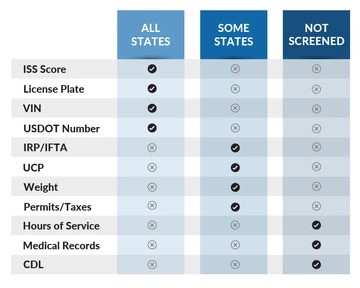
The screening criteria used is at the discretion of the enforcement agency, but these are some of the common credentials:
● The carrier’s ISS score, which reflects the overall safety profile of the fleet.
● The license and vehicle identification number (VIN), which allows law enforcement agents to screen against registration, permits, and taxes.
● The weight of the vehicle.
By combining these credentials into one system, bypass programs provide officers with a more efficient screening process. They can focus their efforts on unsafe vehicles while allowing safer vehicles to stay on the mainline and deliver their load faster.
However, this does not mean safe carriers do not need to be inspected. Law enforcement sets a “random pull-in factor” at each inspection station so that a certain percentage of fleets, regardless of ISS score or bypass system integration, are subject to being inspected. This is an important safety precaution that ensures all fleets are fairly screened.
Bypass services, like Drivewyze PreClear®, use ISS scores to predict the likelihood of requiring an inspection. The lower the score, the less likely the truck will be asked to pull in. This prediction and the random pull-in factor help improve safety on the road while decreasing inspections for fleets with outstanding safety scores.
Misconception #2: Bypass Programs Use CSA Scores for Screening
Compliance, Safety, Accountability (CSA) scores are calculated using roadside inspection and crash report data from the previous 24 months. The Federal Motor Carrier Safety Administration (FMCSA) then combines these various CSA scores to determine a single-digit ISS score for a fleet, which offers a more comprehensive view of a fleet’s overall safety profile. For this reason, bypass systems only screen for a fleet’s ISS score, not its collection of different CSA scores over the past two years.
In fact, bypass programs provide an opportunity for fleets to improve their ISS score. Every bypass and clear inspection show the carrier’s commitment to safety. Over time, this lowers the ISS score, enhances the safety profile, and increases each truck’s likelihood of bypassing a weigh station.
Some bypass systems, like Drivewyze PreClear®, also provide real-time data reporting to identify the most common criteria inspected at weigh stations. This gives fleet managers an in-depth look at which safety areas need the most attention. They can restructure their safety strategy to target those areas and improve their ISS score moving forward.
Misconception #3: Bypass Programs are Used to Track Drivers
Mobile bypass technology makes a driver’s job safer and easier.
It’s the mobile nature of these kinds of technologies however, that raises concerns about driver privacy. Bypass systems screen for information that will only alert law enforcement of any safety violations. It’s important to note that officers will never check a driver’s:
● Hours of Service (HOS) log
● Past medical records
● Commercial driver’s license (CDL)
Bypass programs use secure mobile technology to ensure this personal information is not provided to law enforcement. Additionally, the bypass system will only record the date and time that a truck bypasses or is asked to pull into a weigh station and does not track the vehicle before or after the station.
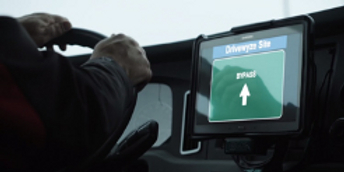
How information is processed inside the station is also strictly regulated:
● Any vehicle data collected at the station does not leave the station.
● Driver data is never collected or shared across locations or officers.
● Law enforcement personnel can only see weigh stations within their jurisdiction visited by the driver, but not in neighboring jurisdictions.
● Officers cannot use this data to issue a citation. For example, they cannot use location data to give a driver a speeding ticket.
Not only do bypass programs keep drivers’ data private, but they also make driving safer. Services like Drivewyze PreClear® offer a hands-free system that can be used on the driver’s mobile device. It sends heads-up notifications to warn drivers about upcoming inspection stations, along with safety alerts for high-risk areas on the road. Plus, since the system doesn’t require a transponder, drivers can avoid dangerous lane changes or slowing down to get a bypass green light.
Test the Benefits of a Bypass Program with a Free Trial
Bypass technology is designed to make trucking easier—for drivers, fleet managers, and law enforcement. But with any innovation, there are going to be questions and concerns.
By staying educated on bypass programs and how they integrate with weigh stations, carriers can improve cost and operational efficiency, improve safety scores, and boost driver safety and retention.
Curious whether a weigh station bypass system can work for your fleet? Contact us to start a free trial of North America’s largest weigh station bypass service, Drivewyze PreClear®.
Everything You Need to Know About Bypass Programs
Weigh station bypass programs have become an integral part of the trucking industry. All carriers have experienced the impact of roadside inspections on their operations, from route delays to increased costs. Bypass programs provide a solution to these challenges.
While fleets are benefiting from the continued improvement to bypass technologies, there are common questions and misconceptions about how bypass programs work. By understanding the basics of bypass systems, fleets can take advantage of significantly enhanced

operational efficiency, driver safety, and employee satisfaction while increasing their opportunities for bypasses.
The Most Common Misconceptions About Bypass Programs
1. Bypass programs will result in more inspections.
Bypass programs are used by officers to reward carriers with good safety ratings and keep inspection sites running smoothly. Bypass screening technology allows law enforcement to review a carrier’s Inspection Selection System (ISS) score, the license and vehicle identification number (VIN), and the vehicle’s weight. Inspection personnel can focus their efforts on unsafe vehicles while allowing safer fleets to remain on the mainline.
2. Bypass programs are used to track drivers
Most bypass services use secure mobile technology to ensure no sensitive information is delivered to law enforcement, such as a driver’s Hours of Service (HoS), medical records, and Commercial Driver’s License (CDL).
Bypass technology is designed to only screen for vehicle-specific criteria, such as the ISS score, license plate, VIN, USDOT number, and record the date and time that a truck bypasses or is asked to pull into a weigh station. The processing of this information is strictly regulated and does not leave the station.
3. Bypass programs require a transponder
While some bypass programs run on transponder-based functionality, more advanced technologies, like Drivewyze PreClear®, are completely transponder-free. GPS-based mobile software allows vehicles to stay on the mainline without slowing down or changing lanes to drive under a transponder reader.
4. Bypass programs use CSA scores for screening
The only safety score screened by a bypass program is the carrier’s ISS score, which is an aggregation of a fleet’s Compliance, Accountability, Safety (CSA) scores. It provides law enforcement with a more comprehensive view of a fleet’s safety profile.
However, safety scores do have important roles in how weigh station bypasses are granted and, if managed well, can increase the opportunity for more green lights en route.
How ISS and CSA Scores Apply to Bypass Programs
Although similar, CSA and ISS scores have distinct differences that come into play during a truck’s route.
● The CSA score is a collection of safety data of roadside inspections, crash reports, investigation results, and registration details from the last 24 months, aggregated by the Federal Motor Carrier Safety Association (FMCSA).
● A fleet’s ISS score is an aggregation of the CSA scores. Ranging from 1 to 99 (100 being out of service), an ISS score reflects a carrier’s overall safety profile. The lower the score, the better the safety rating. Bypass technology screens for a vehicle’s USDOT number to locate the fleet’s ISS score in the federal system.
A great ISS score will typically result in more bypasses; a truck with an outstanding score could receive bypasses up to 98% of the time. Bypass services, like Drivewyze PreClear®, use the ISS score to determine the likelihood of performing an inspection.
However, a poor ISS score does not mean that a fleet won’t receive any bypasses. It may receive fewer, but a carrier can improve its safety score over time with a software-based bypass service that can automatically increase a carrier’s opportunity for bypass based on sheer volume.
Invest in a Bypass Service for more Green Lights
Adopting a transponder-less bypass service can provide carriers with significant cost and time savings. In one case, Mesilla Valley Transportation saved 1,579 hours and over $164,000 in operating expenses in just one month with such a system. Fleet managers should consider three primary criteria when selecting a 100% software-based bypass service:
1. Network Coverage on Routes, Nationwide & Beyond
Choose a bypass service that operates on the broadest possible network to increase the opportunity for a bypass, especially if the carrier operates in multiple jurisdictions. The bypass service should be available at fixed and mobile inspection sites, with functionality at scales that are Weigh In Motion (WIM) enabled and scales that are not. Currently, the bypass service with the largest bypass network across the industry—including two Canadian provinces—is Drivewyze PreClear®.
2. Ease of Use, For Efficiency & Safety
Select a software-based bypass service that can be easily integrated onto the cab’s existing telematics devices (ELD) or the driver’s personal mobile phone or tablet.
Software-based bypass services leverage GPS and geo-fencing technologies and provide hands-free functionality with advanced notification capabilities, like heads-up notifications for upcoming inspection stations and safety alerts for high-risk areas. This allows drivers to stay on the mainline for longer, avoiding delays or dangerous lane changes.
3. Opportunities for a Connected Truck
A bypass service that allows for cross-platform integration onto existing telematics and mobile devices means carriers only have to invest in the base software once. Additional software solutions can be installed with no extra hardware needed. This gives fleets the opportunity to expand their operational capabilities quickly and cost-effectively.
For example, Drivewyze’s Safety+ service is an application that runs on the fleet’s existing ELD system and proactively prevents accidents and citations through in-cab and back-office driver coaching.
Real Fleets, Real Results
Wondering how your fleet will benefit from investing in a bypass service? These fleets found tangible solutions to their operational problems with the leading software-based bypass service from Drivewyze PreClear®.
● After implementing a transponder-less bypass service in 2015, USA Truck Capacity Solutions saved more than $1,360,000 over six months and returned 12,576 hours of drive time to the operation.
● In an effort to move away from its transponder-based system, which only worked at permanent weigh stations and caused technical difficulties for drivers, Cargo Transporters transitioned to a software-based service. This resulted in a 748% ROI, including a cost savings of $36,000 in the first two weeks of use.
● Barole Trucking’s outstanding safety score had Commercial Vehicle Enforcement (CVE) officials recommend Barole invest in a weigh station bypass service to avoid time spent at inspection sites. The fleet has since reduced weigh station delays by 17 hours and increased the productivity of their out-of-state division trucks by up to four additional loads every month.
Interested to see how a bypass system can improve your fleet operation? Start a free trial of North America’s largest weigh station bypass service, Drivewyze PreClear®.
How Smart Technologies are Reinventing Driver Efficiency & Safety
In case you missed our recent webinar here’s a recap to bring you up to speed on the latest and greatest in weigh station bypass technology.
Advantage Asset Tracking knows your drivers really appreciate anything that keeps them safe and moving so they can get home faster. That’s why we’ve partnered with them to offer our newest safety services – Drivewyze Safety Notifications and Safety+ – to your fleet, free for 60 days.
Watch this short video and see how these safety services can take your safety program to the next level or take this opportunity to review the following:
View the weigh station bypass brochure
View the Safety Notifications brochure
A quick 15 minutes is all you need to set up your fleet on a trial.

